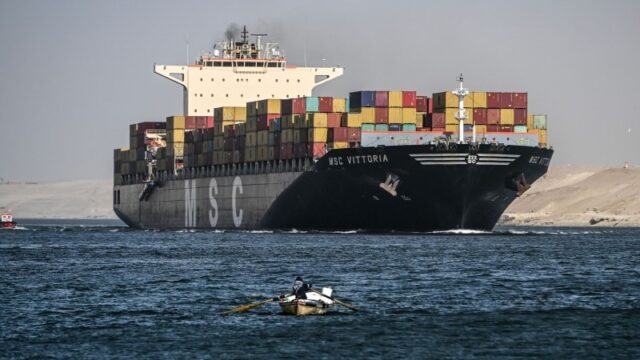For metals shipped in containers, the Red Sea conflict poses an upside risk. Container freights are the most affected by rerouting, increasing shipping times, delaying shipments and boosting freight costs.
Roughly half of the shipped tonnage crossing the canal are containerised goods, making it the most important artery for container trade. In the three weeks after mid-December, some 80% of the container vessels on the Suez route have been forced to change course, a level which reached 90% in the first week of January (according to Clarksons). Market leaders MSC and Maersk have diverted over 60 container vessels around the Cape in just three weeks. Other larger container liners – Hapag Lloyd, Cosco, ONE, Evergreen, HMM and ZIM – have followed suit.
This is increasing freight rates, with container rates already more than tripling. It’s also adding weeks to delivery times. The higher shipping costs will need to be eventually passed through to the end-selling price for metals.
For aluminium, this is bullish for prices – particularly for premiums, rather than the LME price. Primary aluminium premiums in Rotterdam have increased by around 10-15% since the beginning of December after months of decline, according to Fastmarkets data.
LME forward spreads remain in a wide contango, providing further support to premiums. The aluminium cash/three-month spread was last at $48.50 per tonne contango. The Middle East is one of the key markets for Europe when it comes to sourcing aluminium and any disruptions there are likely to support the premiums.
Europe relies heavily on aluminium imports with nearby supply constrained. The shipping disruptions come at a time when Western European aluminium production is the lowest this century. Several output cuts have taken place in Europe since December 2021, accounting for 2% of the global total. Soaring energy costs following Russia’s invasion of Ukraine have squeezed producers’ margins, with energy-intensive metals like aluminium in particular being affected.
Low premiums over the past few months have also weakened incentives to ship material to Europe, which has left many in the aluminium market without buffer stocks should demand improve more than expected in the coming months.




